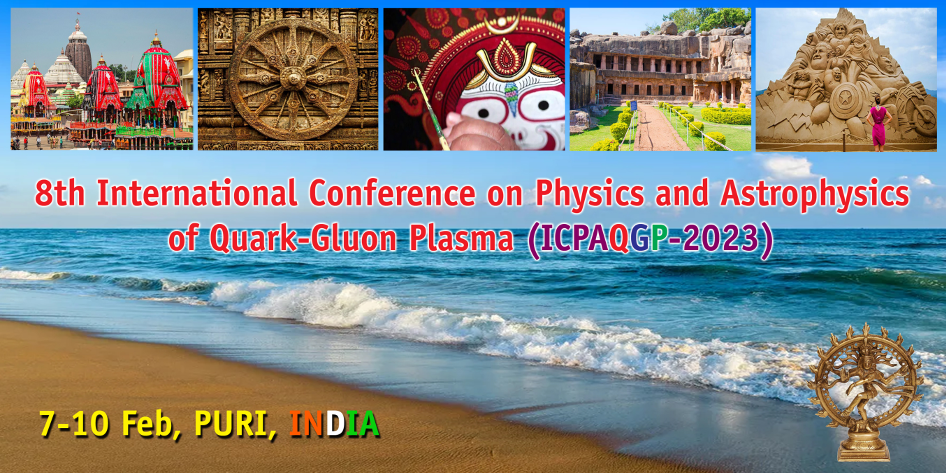Using the high statistics datasets of the HotQCD Collaboration,
generated with the HISQ (2+1)-flavor action for light and strange quarks,
and treating the charm sector in the quenched approximation, we analyze
the second and fourth order cumulants of charm fluctuations and
the correlations of charm with lighter conserved flavor quantum numbers.
We can make use of a factor 100 larger...
The QCD vacuum is known to have a rich structure with non-trivial topologies. These can be classified with the topological charge, whose second moment can be shown to be related to the mass of the axion. It is also of interest the introduction of non-perpendicular electric and magnetic fields in QCD, which enhances the weight of non-zero topological sectors. For weak electromagnetic fields the...
The transition from hadron to the quark-gluon plasma phase is a smooth crossover in QCD with physical quark masses, nevertheless, the (almost) chiral nature of the light quarks is believed to drive such a transition. This phenomenon can be studied using lattice QCD techniques and the most popularly used fermion discretization, the staggered fermions only have a remnant of the full chiral...
For $SU(N_c)$ gauge theories there is a first-order phase transition for $N_c \ge 3$, which signals the deconfinement of the color degrees of freedom at temperature $T_d$. However, its mechanism is not yet understood but is believed to be of topological origin. In this work we measure the topological constituents of $SU(3)$ gauge theory configurations generated using lattice techniques for...
Strong magnetic fields occur across the universe in several physical
systems. This is the case for magnetars, heavy-ion collisions and the
primordial universe. These fields are strong enough to have an impact
on the interactions at the QCD scale. In this work, we applied lattice
QCD simulations to gain new insights into how QCD thermodynamics
is affected by the presence of a background...
Bare perturbative results at finite temperatures have some serious problems, infrared sensitivity of the massless gauge theories, gauge-dependent damping rates, etc. Additionally, QCD thermodynamics are poorly convergent if truncated order-by-order in the coupling constant. To overcome these problems, Braaten and Pisarski proposed a gauge invariant reorganization of the usual perturbation...

